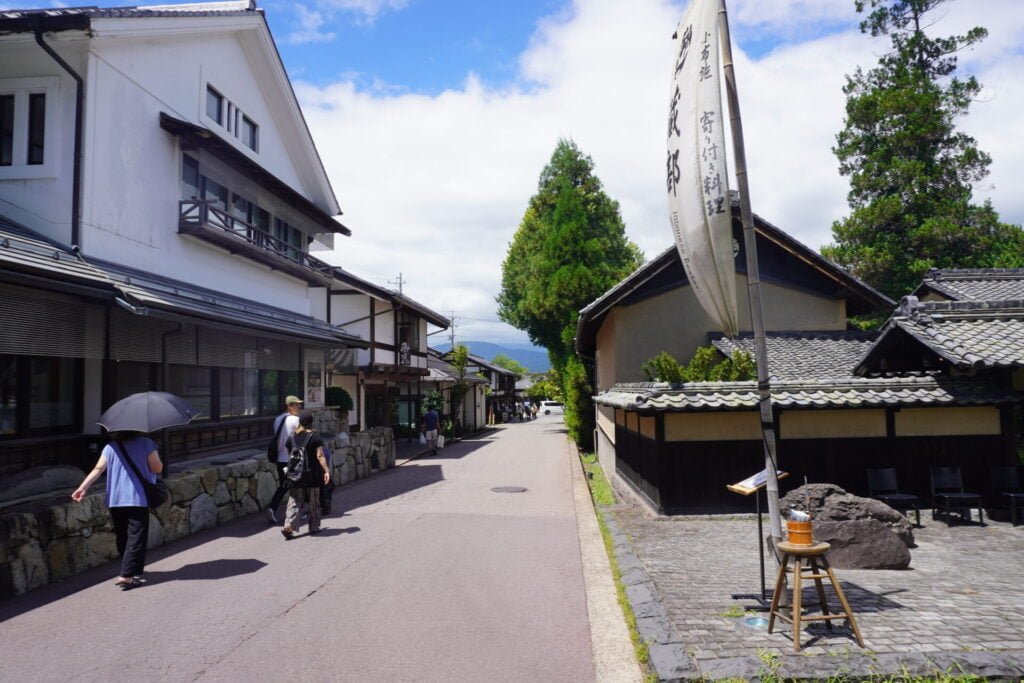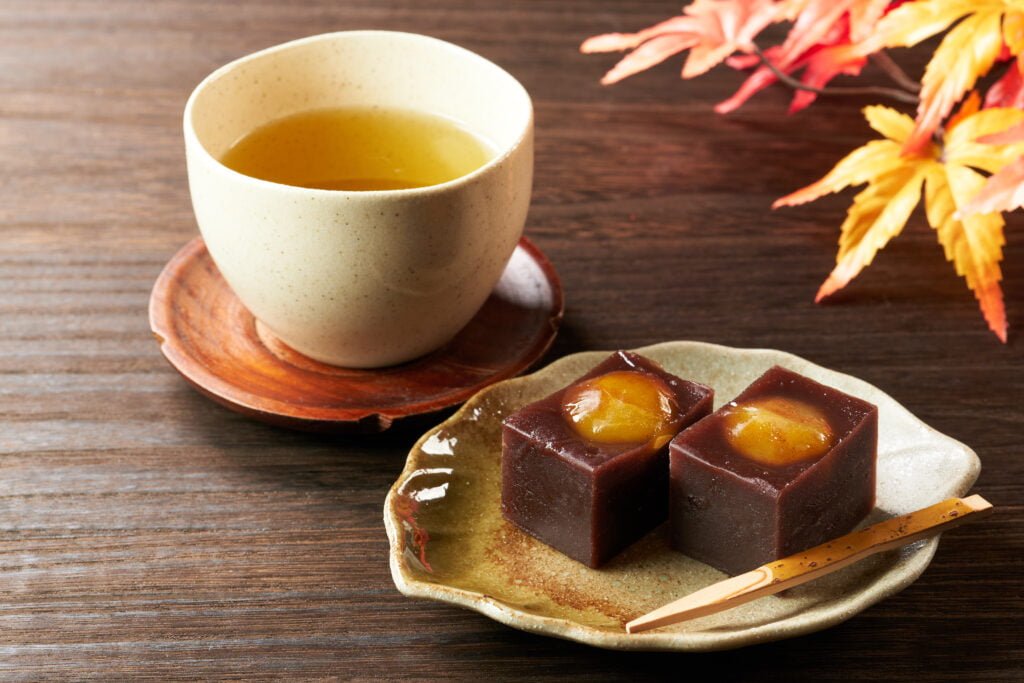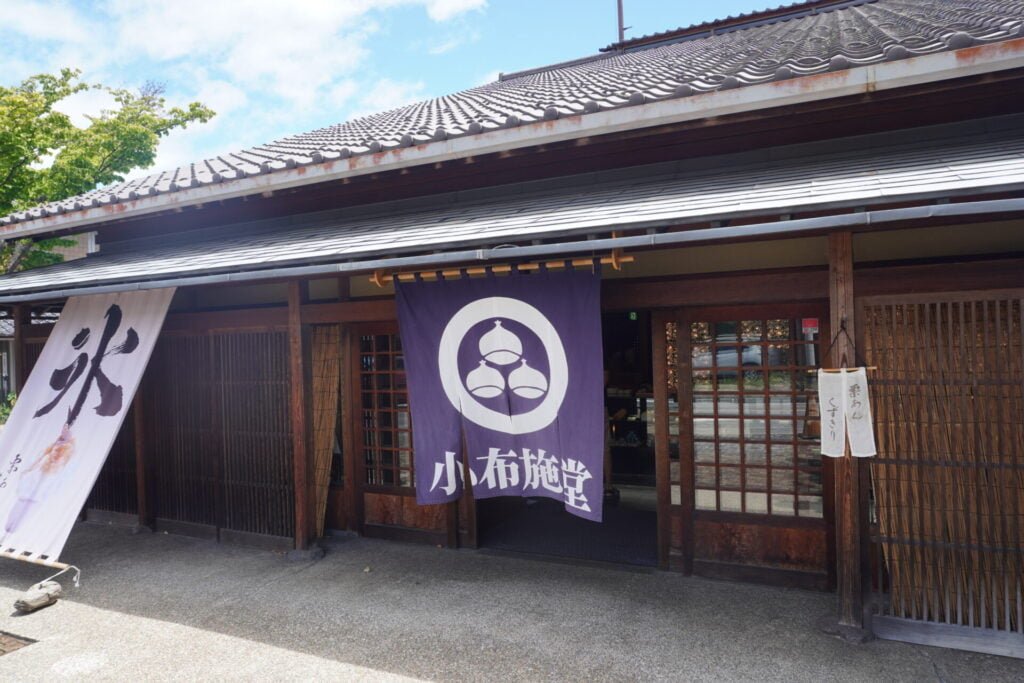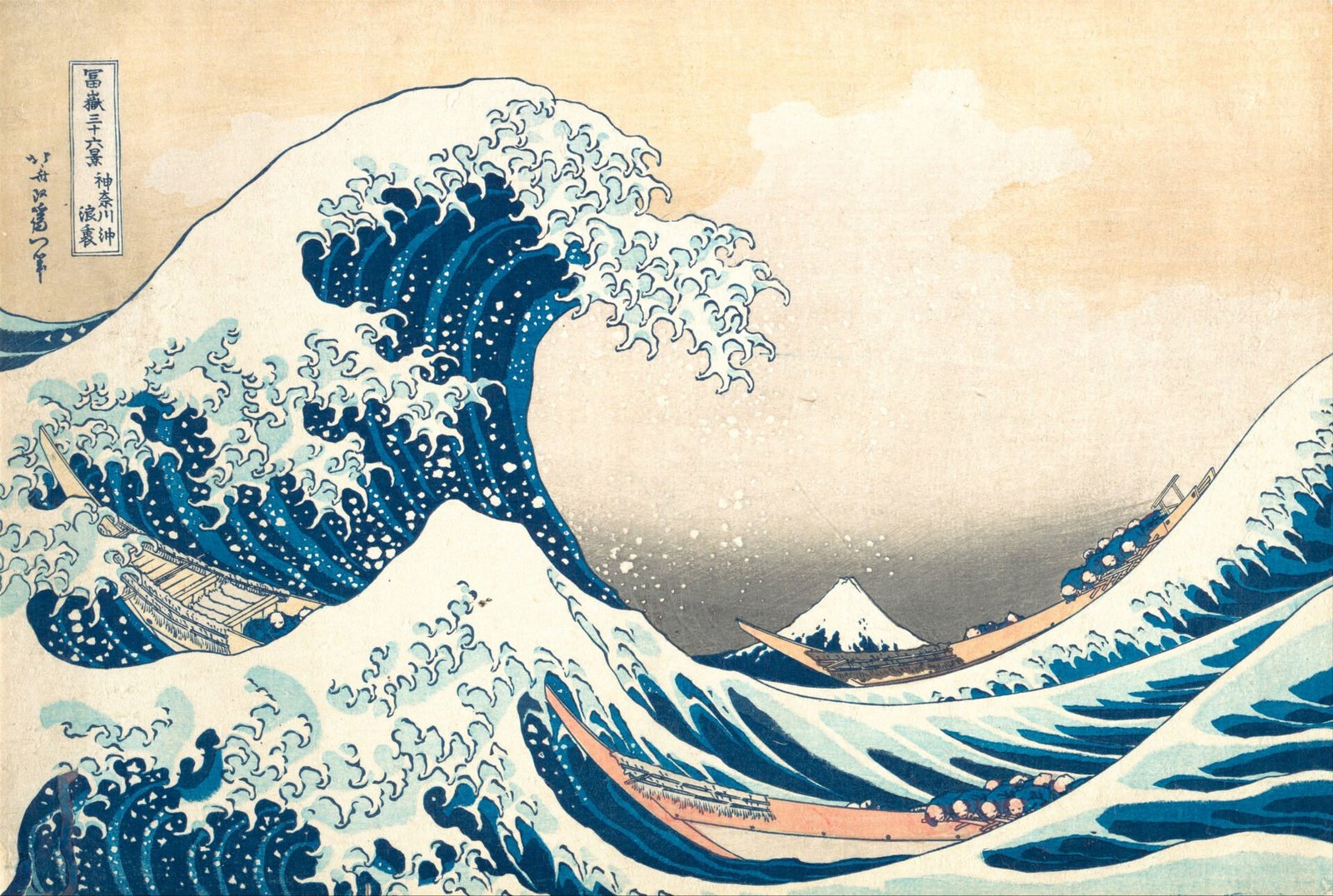Obuse’s Exquisite Chestnut Wagashi and the Artistic Legacy of Hokusai
Obuse, a small town in Nagano Prefecture, is renowned for its unique culture that blends chestnut confectionery traditions dating back to the Edo period with the legacy of the ukiyo-e artist Hokusai Katsushika. Let’s explore the charm of Obuse, where the aroma of chestnuts mingles with the artistry of Hokusai, through its rich history.

Obuse Town: A Hidden Gem in Northern Shinshu
Obuse is a small town of about 10,000 people located in the northeastern part of Nagano Prefecture. Blessed with fertile land nurtured by the Chikuma River, it has long been known for cultivating chestnuts and apples. During the Edo period, it flourished as a post town along the Tani Kaido road, and its historical townscape remains to this day.
The development of Obuse Town in the Edo period was significantly influenced by its geographical factors. The completion of the “Senryo-tsutsumi” embankment, built to alter the course of the frequently flooding Matsukawa River, made Obuse a crucial junction connecting various routes such as the Tani Kaido, Taniwaki Kaido, and Chikuma River, linking the Niigata area with the Kanto region. This geographical advantage became the catalyst for Obuse’s commercial prosperity during the Edo period.
The main industries are agriculture and tourism, with chestnut-based confectioneries being particularly famous nationwide. Known as a place associated with Hokusai, it’s a popular tourist destination that uniquely combines art and food culture.
Chestnuts and Hokusai: Obuse’s Two Symbols
There are several intriguing legends about the origin of Obuse chestnuts.
One involves Kukai (Kobo Daishi), the famous Buddhist monk. It’s said that during his travels, he stopped in this area, named it Obuse, and planted three chestnut seeds, which then multiplied. However, this is one of many Kukai legends found across Japan, likely born from the people’s wishes for industrial development.
Another tale relates to Tsunetomo Ogino, a warrior from the early Muromachi period. It’s said that when Ogino built Nijussha Castle in what is now the Karida area of Obuse, he transplanted chestnuts from his former castle in Tanba for flood prevention, land reclamation, and food. However, when comparing old documents with Ogino’s chronology, many inconsistencies arise, leaving this story unconfirmed as well.
Thus, the origin of Obuse chestnuts remains shrouded in mystery. The question of who brought them, when, and how continues to captivate many people’s interest as an intriguing enigma of the past.
On the other hand, Hokusai’s connection to Obuse is more clearly documented. In his later years, Hokusai was under the patronage of Takai Kozan, a wealthy merchant in Obuse, and left many works in this town. Particularly famous is the ceiling painting “Phoenix Staring in Eight Directions” at Ganshoin Temple. Hokusai’s presence has greatly influenced Obuse’s culture and tourism, remaining one of the town’s major attractions.

The Birth of Obuse Chestnut Confectionery: A Tradition from the Edo Period
Obuse chestnuts had already established their reputation by the Edo period. Among the various tribute gifts sent to the Shogunate from each domain, there were the “Three Great Fruits of Edo”: Kishu mandarin oranges, Koshu grapes, and Obuse chestnuts. The name “Obuse Chestnut” resonated widely across the land, gaining such fame that it was highly valued as a tribute to the Shogunate.
The first confection made from these renowned Obuse chestnuts was “Kuri Rakugan.” In 1808 (5th year of the Bunka era), the founder of Sakurai Kanseido, the town’s oldest confectionery, devised this sweet. Made by grinding chestnuts into powder, pressing it into wooden molds, then removing and drying, this confection marked the beginning of Obuse’s chestnut sweets.
Later, in 1819 (2nd year of the Bunsei era), pure “Kuri Yokan” was created, and in 1892 (25th year of the Meiji era), “Kuri Kanoko,” which incorporates candied chestnuts into chestnut paste, was born. In the Meiji era, chestnut confections became year-round products by being canned, further increasing their popularity.
Thus, Obuse’s chestnut confectionery has a tradition dating back to the Edo period and has continued to evolve with the times. This history is a testament to the high quality of Obuse chestnuts and the ingenuity of the local confectioners.
Representative Obuse Chestnut Confections: A Fusion of Tradition and Innovation
Here are some of the representative chestnut confections from Obuse:
- Kuri Yokan: This is the flagship traditional chestnut confection of Obuse. It’s made by kneading high-quality chestnuts and sugar, known for its rich chestnut flavor.
- Kuri Kanoko: The name “Kuri Kanoko” is derived from the resemblance to the white spots on a fawn’s back called “kanoko madara.” While typical “kanoko” sweets wrap mochi, gyuhi, or yokan with bean paste and cover the outside with candied beans, Kuri Kanoko uses chestnuts instead of beans. It’s a unique Obuse confection that allows you to enjoy the flavor and texture of chestnuts.
- Kuri Okowa: This is a local dish of steamed glutinous rice with chestnuts, allowing you to fully enjoy the flavor and texture of chestnuts.
- Kuri Rakugan: This is considered the original Obuse chestnut confection, a traditional dry confection made using chestnut powder.

In addition to these traditional chestnut sweets, new confections using chestnuts have been developed in recent years. For example, chestnut ice cream and chestnut tarts have emerged, fusing tradition with innovation.
Enjoying Obuse Chestnut Confections: Recommended Shops and Walking Tour
Here are some recommended shops for enjoying chestnut confections in Obuse:
- Obusedo Main Store: Originally founded as Masuichi Ichimura Sake Brewery during the Horeki era of the Edo period, it’s particularly famous for its Kuri Kanoko. – map
- Sakurai Kanseido Obuse Main Store: Founded in 1808, this long-established shop is popular for its Kuri Yokan and Kuri Okowa. – map
- Chikufudo Obuse Main Store: Established in 1893, it offers Kuri Yokan and Kuri Kanoko, as well as chestnut ice cream. – map

A recommended course is to visit these shops along with the Hokusai Museum and Gansho-in Temple. You can enjoy various chestnut confections while appreciating the townscape of Obuse.
Obuse Sightseeing: Attractions Beyond Chestnut Confections
Besides chestnut confections, Obuse offers several other attractions:
- Hokusai Museum: An art museum displaying works by Katsushika Hokusai. – map
- Gansho-in Temple: You can see Hokusai’s ceiling painting “Phoenix Staring in Eight Directions” here. – map
- Takai Kozan Memorial Museum: The former residence of Takai Kozan, who patronized Hokusai. – map
By visiting these cultural facilities, you can sense the deep connection between Obuse’s history and art.
Access to Obuse: Journey from Tokyo
You can access Obuse from Tokyo via the following route:
- Take the Nagano Shinkansen from Tokyo Station to Nagano Station (about 1 hour 40 minutes)
- From Nagano Station, take the Nagano Electric Railway to Obuse Station (about 30 minutes)
- Walk from Obuse Station to various tourist spots
Access by bus or car from Nagano Station is also possible.
Conclusion: Rediscovering the Charm of Obuse Chestnut Confections
Obuse’s chestnut confections are more than just local specialties. They represent a unique flavor born from the interweaving of long history, culture, and art in this town. Walking through the streets fragrant with chestnuts, experiencing Hokusai’s art, and enjoying traditional flavors – this is the luxurious experience that Obuse offers.
We encourage you to visit Obuse and fully savor the charm of this town along with its chestnut confections. You’re sure to discover new aspects of Japanese confectionery.
